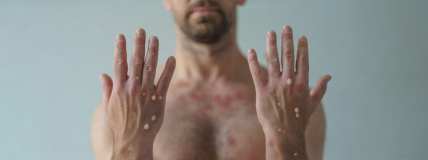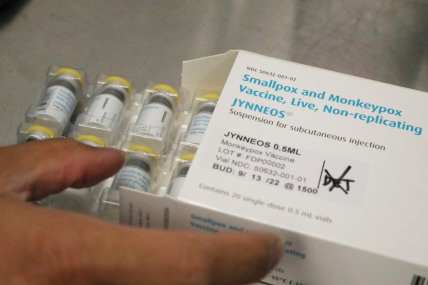Studies show monkeypox transmitted three ways. Experts rate risk levels as high, medium, lower
Cases of monkeypox in the United States have topped 7,000. The virus is most transmissible through skin-to-skin contact.
As the virus known as monkeypox continues to spread across the nation, experts are advising Americans how to stay safe.
There are three ways that the virus is transmitted: Through direct contact with an infected person’s skin rash; by respiratory droplets spread when someone coughs or sneezes, and by touching contaminated surfaces or objects. According to The New York Times, these three transmission behaviors have been classified as high, medium and lower risk.
The most high-risk way to become infected with monkeypox is by skin-to-skin contact with lesions through sexual intercourse, cuddling — even kissing (especially on the groin, buttocks and thighs). Experts note that people who live in the same house as an infected person are also at high risk. Further, touching contaminated surfaces, bedding, clothing and towels, as well as sharing utensils with an infected person are high-risk actions.

Of medium risk is transmission via respiratory droplets that can pass between people in face-to-face or near face-to-face situations, at events where there is dancing and direct skin-to-skin contact, as well as crowded indoor spaces. This means that — as with COVID-19 — wearing a mask and maintaining 6 feet of distance is still a good idea, particularly in parts of the country where monkeypox cases are high.
Doing things like trying on clothes and touching nonporous surfaces are unlikely to spread monkeypox and are therefore in the lower transmission risk category. “Personally, I’m less concerned with trying clothing on in the store,” Dr. Saskia Popescu told The Times. However, she did advise those who are nervous about this to wash the clothes before wearing them.
Other lower transmission behaviors include sitting on public transportation, sitting in an office and going to school.
Specialists caution that the guidelines can change, particularly if monkeypox virus spreads. “We’re not there yet” though, said Bernard Camins, the medical director for infection prevention at the Mount Sinai Health System.
As theGrio previously reported, the federal government declared the monkeypox outbreak a public health emergency last week after cases topped 7,000. The declaration unlocks federal funds for the disbursement of vaccines and other treatments for the virus. Likely symptoms include fever, body aches, chills, fatigue and pimple-like bumps on many parts of the body.
“We are prepared to take our response to the next level in addressing this virus,” said Xavier Becerra, head of the U.S. Department of Health and Human Services, in the Aug. 5 announcement, “and we urge every American to take monkeypox seriously.”
TheGrio is FREE on your TV via Apple TV, Amazon Fire, Roku and Android TV. Also, please download theGrio mobile apps today!


